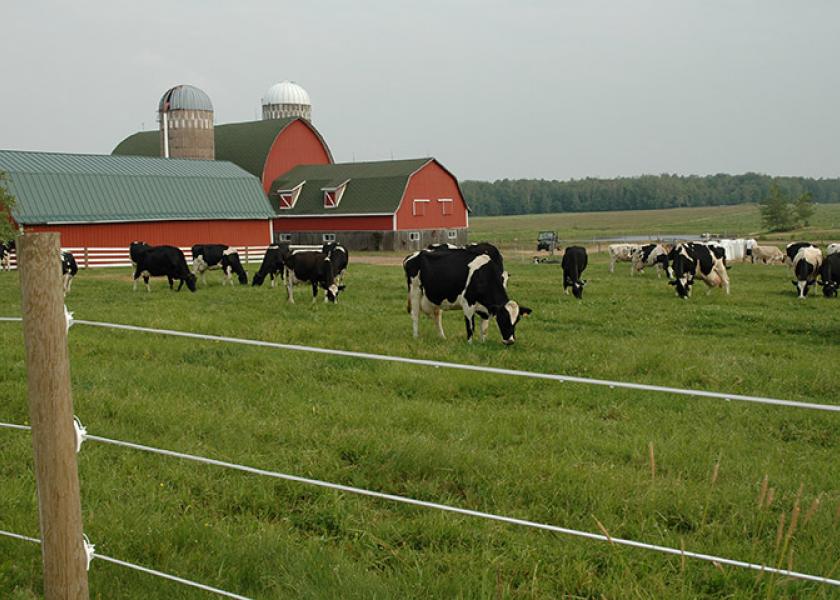U.S. Milk Production Up 1.2% in July

The United States Department of Agriculture reports that July milk production in the United States increased 1.2% in July, reversing a trend a decreasing monthly increases.
Monthly milk production increases exceeded 1% through May but were declining. June milk was up just 0.9%.
“In the grand scheme of things, 1.2% growth is rather uneventful – maybe even a little light. But we’ve got more milk (and cows) than we were looking for and prices have already been up all week,” says Dave Kurzawski, a dairy analyst with FCStone, LLC. “All this may lead to a cooling of the recent upside price momentum we’ve seen in dairy. But that may be limited – particularly with the recent strength in butter/powder.
Cow numbers also were up 1,000 head over July, and 54,000 head over a year ago. Since the beginning of the year, cow numbers are up 18,000 head, with the U.S. dairy herd now totaling 9.322 million cows.
California was among the major western dairy states showing a production decline, down 3.3% from a year ago. But USDA says California cow numbers are down just a 1,000 head. Milk per cow in the Golden State was down 35 lb./cow/day , or roughly one pound per day.
New Mexico was down 4.2% in milk production, though cow numbers held steady. Texas production was off slightly, 1.2%. Cow numbers in Texas were down 8,000 head.
The biggest year-over-year gain, in terms of percentage was South Dakota, up 12.3% over last July. Cow numbers in South Dakota were up 9,000 head. Michigan was up 6.3%, and cow numbers there were up 15,000 head.
Production is also going gang-busters in Wisconsin, up 5.3%, and Minnesota, up 4.2%.
Read the full July milk production report here.







